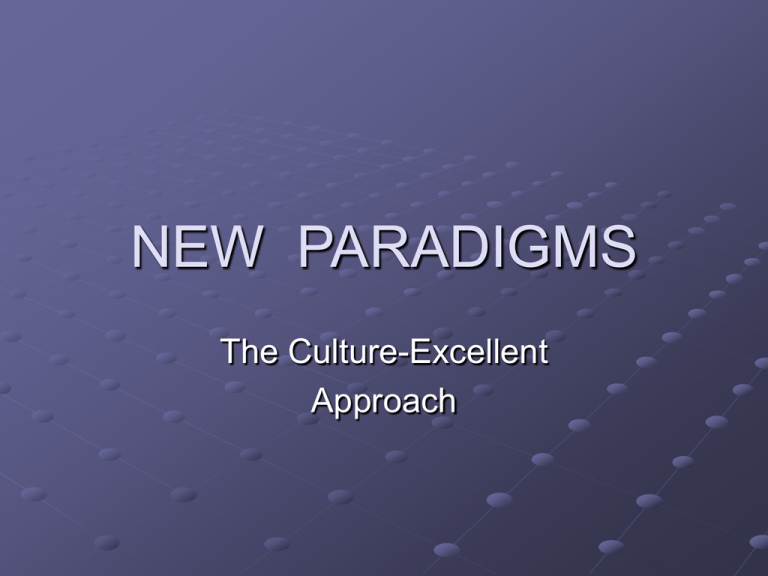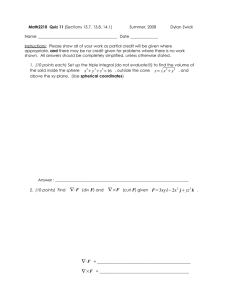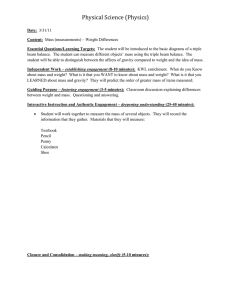NEW PARADIGMS The Culture-Excellent Approach
advertisement

NEW PARADIGMS The Culture-Excellent Approach Learning Objectives 1. Understand the reasons for emergence of new organizational paradigms 2. Describe the key features of the CultureExcellence approach 3. List the core advantages and disadvantages of Culture-Excellence approach New Paradigms From his book “ The structure of Scientific Revolutions”, he defined a paradigm as a universally recognized scientific achievement. New paradigm was born in 1970s and 1980s, because western woke up to the Japanese challenge. A new techno-economic rationale is emerging. This new rationale has 3 main features : 1. A shift towards information-intensive rather than energy 2. A change from dedicated mass production toward more flexible systems 3. A move towards the greater integration of process and systems within companies, suppliers, and customers. This developments have been given variety of names, in 1990s, they call “postmodernism” The Culture-Excellent Approach This approach is attempting to predict and promote the way firms should operate in the future. Search for Excellence Features : Tom Peters and Robert Waterman Book : In Search of Excellence : Lesson from America’s Best Run Companies (1982) They determine 4 ‘soft’ Ss which held the key to business success : 1. Staff 2. Style 3. Shared values 4. skills There are 8 key attributes that organizations need to achieve excellence : 1. A bias for action 2. Close to the customer 3. Autonomy and entrepreneurship 4. Productivity through people 5. Hands-on, value driven 6. Stick to the knitting 7. Simple form, lean staff 8. Simultaneous loose – tight properties Post-entrepreneurial Model Features : Rosabeth Moss Kanter Book : When Giants Learn To Dance : Mastering the Challenges of Strategy, Management and Careers in the 1990s She said : winning it requires faster action, creative maneuvering, flexibility, and closer partnerships with employees and customers. She sees post-entrepreneurial organizations pursuing 3 main strategies : 1. Restructuring to find synergies 2. Opening boundaries to form strategic alliances 3. Creating new ventures from encouraging innovation and entrepreneurship The consequences of the post-entrepreneurial model will have a major impact on employees for : Rewards systems Career paths and job security Lifestyle Emerging Future Organizations Features : Charles Handy Book : Understanding Organizations (1976) He believes the new organizations will need to treat people as assets to be developed and motivated Handy identifies 3 types of organizations : 1. The Shamrock organizations 2. The federal organizations 3. The Triple I organizations The Shamrock Organizations Composed of 3 distinct groups : 1. The core workers 2. The contractual fringe 3. The flexible labor force The Federal Organization A organizations as network of individual organizations allied together under a common flag with some shape identity The Triple I Organization Triple I based on Intelligence, Information and Ideas In future, the equation organizations will be Triple I = AV (Added Value) and have 1. Invest in smart machines to remain competitive and effective 2. Recruit skilled and smart people to control the machines 3. Ensure that this group of skilled people is rewarded equitably Summary 1. Organizations entering new age, where familiar themes are taking on different meanings and expressed in new language 2. The important in the new is brain power 3. The ability to make intelligent use of information to create ideas that add value and sustain competitiveness


